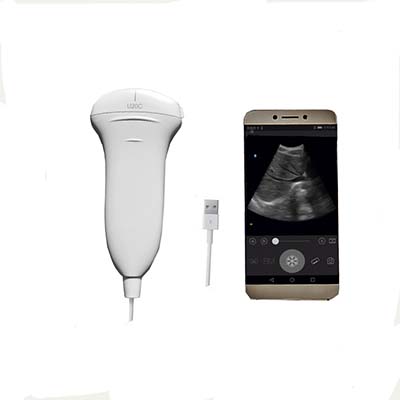U20C
all-digital handheld probe ultrasonic diagnostic instrument
Introduction:
This
product adopts digital beam synthesis (DBF), real-time dynamic aperture imaging
(RDA), real-time dynamic sound velocity apodization (DRA), real-time dynamic
transmission point-by-point focus (DTR), real-time dynamic reception
point-by-point focus (DRF), numerical control dynamic frequency Scanning (DFS),
8-segment digital TGC, dynamic digital filtering, image enhancement, line
correlation, frame correlation, point correlation, linear interpolation and
other image processing technologies.
The
product is suitable for clinical ultrasound examination of human abdomen,
gynecology, obstetrics, urology diseases, such as liver, gallbladder, kidney,
spleen, pancreas, uterus, bladder, fetus, accessories, etc., and family
planning pregnancy check, ring check and obstetrics and gynecology check use.
Technical
characteristics and parameters:
1.
The structure is divided into portable handheld type.
2.
It has five display modes: B, B+B, 4B, B+M, and M.
3.
Scanning method: 80-element electronic convex array;.
4.
Probe interface: USB interface.
5.
Pre-set examination mode functions: emergency, gynecology, obstetrics, abdomen,
urology
6.
With probe ultra-wide frequency conversion function, frequency conversion
receiving function: 2.0MHz, 3.0 MHz, 3.5MHz, 4.0MHz,
5.0MHz.
7.
Detection depth: ≥ 190mm, adjustable from 90mm-240mm.
8.
Image magnification function: image magnification (real-time B image mode),
8-level adjustment, maximum magnification 4 times; partial magnification
function: real-time and frozen partial magnification function can be realized.
9.
Image pre-processing: variable aperture, dynamic apodization, dynamic digital
filtering, etc.
10.
Image post-processing: 8 kinds of γ correction, line correlation, frame
correlation, dot-line correlation, linear interpolation, digital spatiotemporal
filtering, digital border enhancement, 42 kinds of pseudo color processing,
etc.
11.
Dynamic range: 0~100dB
adjustable. Visually adjustable.
12.
Grayscale conversion: 256 levels.
13.
Display speed: 3 levels adjustable.
14.
It can realize image freezing, real-time, partial zooming, up and down flip,
left and right flip, 8-segment TGC adjustment.
15.
The movie playback function can realize the circular storage of 512 images,
continuous playback or single-step forward and backward playback.
16.
Image storage and movie playback function: support BMP, JPG, PNG, TIF, DCM and
other static image format storage; support up to 512 frames of video storage
and playback; support image transfer to U disk and DICOM sending function. 17.
Editing and display function: Chinese/English language selection; arrow,
marking function; system working status display; gray scale bar display; probe
position indicator; hospital name, patient name, age, gender; 140 body position
marks with probe positions ; Full-screen character notes; real-time clock
display.
18.
Full-screen character annotation function. In the Chinese state, the full
Chinese menu display can be realized. The character display function of the
device interface includes: Chinese/English menu is selectable; Chinese/English
input can be switched mutually; marking function; system working status display
and user help information, patient information, user parameter display and
convenient data query. 19. Measurement function: slightly different according
to different versions, distance, circumference, area, volume, ellipse
measurement, heart rate, BPD, GS, CRL, FL, HL, OFD, TTD, AC) and expected date
of delivery, fetal weight, amniotic fluid index Wait for measurement function.
20.
It can be connected to a variety of terminals. It is faster, more convenient
and flexible to operate by ordinary computers with touch displays, notebook
computers, tablet computers, and mobile phones.
21.
Using high-speed integrated circuits and 1.5V low-voltage devices, low energy
consumption and high reliability; the internal circuit board adopts patch
mounting technology, the host is small in size, light in weight and beautiful
in appearance.
22.
Wider application scenarios: It can be applied to various clinical departments,
primary medical units, and emergency medical units in major hospitals for rapid
emergency inspections (such as emergency, ICU, ambulance, field rescue) and
preliminary screening (Such as ward visits, fetal monitoring, hospital physical
examination, lower-level examinations, family planning examinations, family
doctor visits), and as anesthesia puncture intervention, PICC catheterization,
visual guidance for various operations, and injection and transfusion to find
blood vessels. Through mobile smart terminals, smart medical services can also
be realized, and remote medical services can be constructed for patients by
uploading images and medical data.












